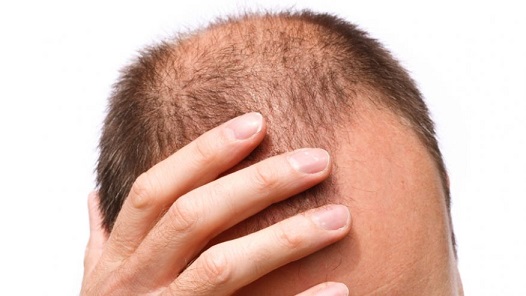Does wearing a hat cause hair loss?
27th September 2024

Are you worried that wearing a hat might be causing your hair loss?
This is a common concern, especially for people who regularly wear hats for fashion or protection. However, is there any truth to the idea that hats can trigger hair loss? In this blog, we’ll explore the facts behind hats and hair loss and share some helpful tips to maintain a healthy scalp and hair.
Origins of the myth
The belief that wearing hats leads to hair loss is surprisingly widespread. It is often based on the idea that hats “suffocate” the hair follicles, restricting airflow and leading to male pattern baldness or other forms of thinning.
But this isn’t supported by science. Hair follicles don’t rely on external air and receive oxygen and nutrients through blood circulation. So, wearing a hat doesn’t cut off the supply of oxygen to hair follicles.
Understanding hair loss
To determine whether wearing a hat actually causes hair loss, it’s important to understand how hair growth works and what contributes to hair loss. Hair grows from follicles located beneath the scalp, and each follicle goes through a cycle that includes phases of growth, rest, and shedding.
The process can be impacted by genetics, hormones, and external factors such as medical conditions, nutrition, and stress. The most common form of hair loss is androgenetic alopecia (also known as male or female pattern baldness). This condition is primarily genetic, and because wearing a hat doesn’t alter your genes, it cannot cause androgenetic alopecia.
Some caveats
While wearing a hat isn’t inherently harmful, there are some things you should keep in mind to ensure your hair and scalp remain healthy.
Wearing a hat may contribute to a condition called scalp folliculitis. This is a very common skin infection that occurs when bacteria, sweat and debris build up and block the hair follicles, leading to inflammation and irritation of the scalp. Persistent folliculitis may lead to scarring which can lead to hair loss in some cases. However, folliculitis can be easily treated, and in the majority of cases, it doesn’t result in hair loss.
Another form of hair loss is traction alopecia, which is caused by putting the hair follicles under constant strain and pulling. This condition is often associated with factors that put the roots under tension, such as tight hairstyles, extensions, or weaves.
In theory, if you’re wearing a hat that’s too tight or is made from rough materials, it could put strain on the hair follicles, leading to traction alopecia. However, there is currently no robust scientific evidence that supports this idea. Even if this is the case, hair loss would typically be temporary and limited to areas affected by the tension.
Hats can make hair loss more noticeable
So does wearing a hat cause hair loss? The answer is most likely no. However, hats might accentuate existing hair loss in some cases:
- Wearing a hat for a long time can make the hair appear messy or alter hairstyles, which may make existing pattern baldness or thinning more obvious.
- Taking off a hat and seeing stray hairs may lead to an association between wearing a hat and hair loss. However, these stray hairs are likely to be some of the 50 to 100 hairs that most people shed each day as part of the normal hair growth cycle. If the hair hasn’t been touched or washed in a few days, more hairs may accumulate on the hat, giving the false impression of excessive shedding.
These factors might explain why hats and hair loss are often associated, even though wearing a hat is unlikely to actually cause hair loss.
Tips for keeping the hair and scalp healthy
While wearing a hat doesn’t usually cause hair loss, there are things you can do to keep the scalp healthy and reduce any tension on your hairs:
- Follow proper hat-wearing practices: Make sure your hats fits properly and that you are regularly washing/changing your hat. This is to avoid debris building on the scalp, which may lead to common scalp conditions such as scalp folliculitis or dandruff. Over time, these conditions may impact hair growth.
- General hair care: Avoid excessive heat or treatments which put tension on the hair. Choose products designed for your specific needs which both clean the hair and nourish the scalp. Learn more about hair loss shampoos.
- See a hair loss specialist: It’s best to see a hair loss specialist as soon as you notice the first signs of hair loss. The sooner you get an accurate diagnosis and explore treatment options, the more effective treatment is likely to be in preventing, treating, or delaying hair loss.
The bottom line: does wearing a hat cause hair loss?
It’s very unlikely. There’s no evidence to suggest that typical hat-wearing habits contribute to permanent hair loss. If you’re noticing thinning or shedding, the cause is far more likely to be genetic, hormonal, or related to another medical factor.
That said, it’s important to be mindful of certain practices. Poor scalp hygiene or consistently wearing tight hats may, in rare cases, contribute to conditions like traction alopecia or folliculitis. However, these instances are more the result of improper hat use rather than hats themselves being the culprit. By following simple steps like ensuring your hats are clean and well-fitted, you can avoid these potential risks.
If you’re experiencing hair loss concerns, get in touch with us at The Maitland Clinic. Our experienced team of highly skilled hair loss experts can help guide you through treatment options and offer personalised advice for your unique situation.










